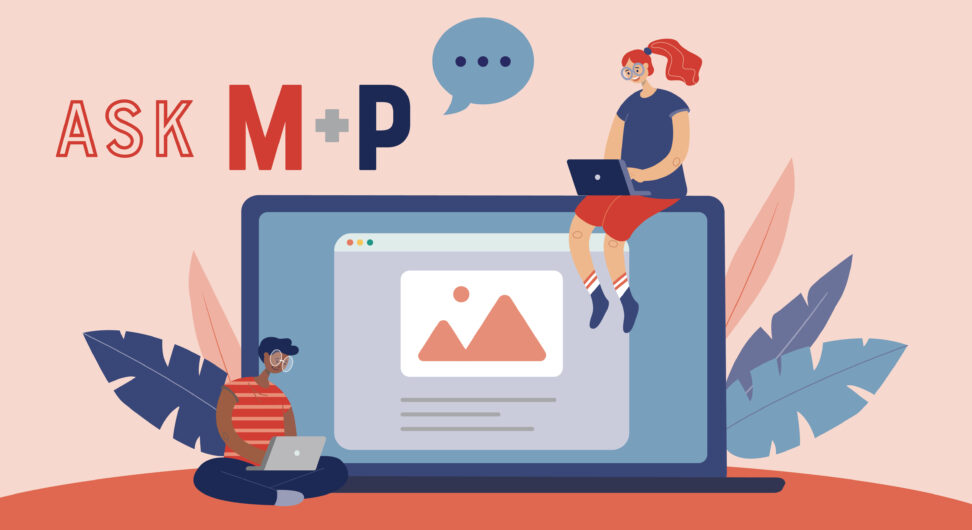Ask M+P: Video On?
You’ve got questions, we’ve got answers. Welcome to Ask M+P, an advice column for creative professionals (and all professionals!)! Our Content Strategist Hannah has thoughts, but so does our larger team. C’mon, it’ll be fun! (have a question? ask us!)
“What are your thoughts on Video On/Off for Zoom/Teams calls? Should always on be the default? Only on for small groups (5 or less)? Should it be a personal choice?”
Well hey there, Zoomer (Teamster means something else)!
Ahhh, the age old (perhaps two years) question of whether or not to show your face on Zoom.
First and foremost, I spent years of my professional life having conference calls, no video required. I launched major creative campaigns with just email and weekly status calls; no one outside my agency even knew what I looked like! And despite my immense beauty, no one seemed to care.
Yet when it comes to Zoom, unless I’m on a big webinar, I’m always camera on. If something is happening on Zoom, a video platform, I just default to video without much thought.
But you’re not just asking me, you’re asking all of M+P. And you came to the right people, because we talk to a lot of people, on Zoom and elsewhere. So, let’s hear from the experts!
“Working from home has opened up scenarios where it’s not as black and white,” says Ethan Irving. He says camera on, mainly because when it’s off, “there are more people interrupting each other. You can’t really read the emotion or the tone as well without seeing someone’s facial expressions.” Plus, he thinks it keeps meetings from dragging on unnecessarily – something we can all be grateful for.
None of us are in a professional setting anymore, so I think there should be room for understanding.
Colin Perkins doesn’t think there’s one default answer. “I’m always video ready if I’m hopping on a call, but if they have theirs off then I’m not going to turn mine on. I let them set the expectation.” He also defaults to phone calls over video calls; it keeps things simple. For big meetings, like an annual all-hands, “those should have video on” – but for a weekly company-wide meeting, “I think it should be preference. As long as you’re engaged in the conversation, I don’t think it really matters.”
And some of us see a lot of nuance in this question. Like many of us, Kristen Barleen shares her living space with a housemate. “Some of us have designated areas to work from home, and some of us don’t. There are times when I’m in a shared space and I feel distracted or like whoever is on the call will be distracted, and I turn the camera off.” If you can’t close a door to be alone or have quiet, it makes total sense to keep your camera off.
That being said, Kristen makes the point that if you’re going to have the camera off, there should be a reason why – and that we should all accept that reason, whatever it is! She thinks it should be on, as a professional courtesy, but makes a really good point: “none of us are in a professional setting anymore, so I think there should be room for understanding.”
So, there you have it. A few different opinions, but all pointing in the same direction: camera on is the default, and it’s okay if that’s not possible. Just communicate! Let your meeting-mates know that your kids are with you, that someone is in the house doing work, or that there’s some other distracting situation you’re saving them from by switching the camera off. If you’re engaged, no one can fault you for whichever camera setting you choose. Hope that helps.
This work is licensed under a Creative Commons Attribution-ShareAlike 4.0 International License.


